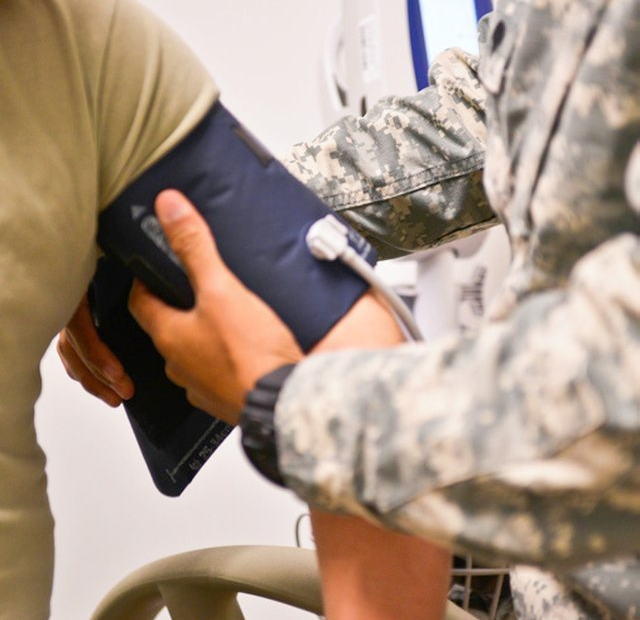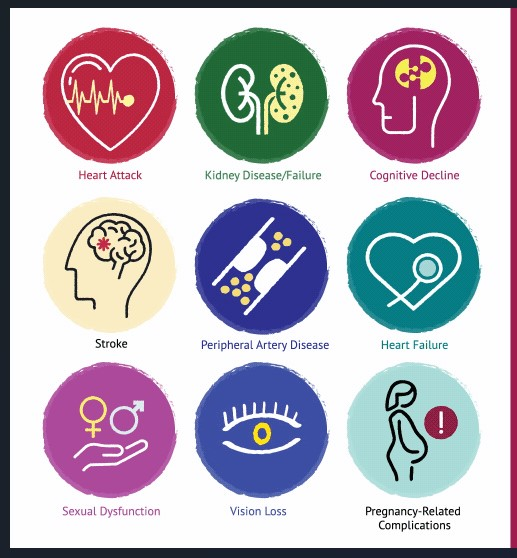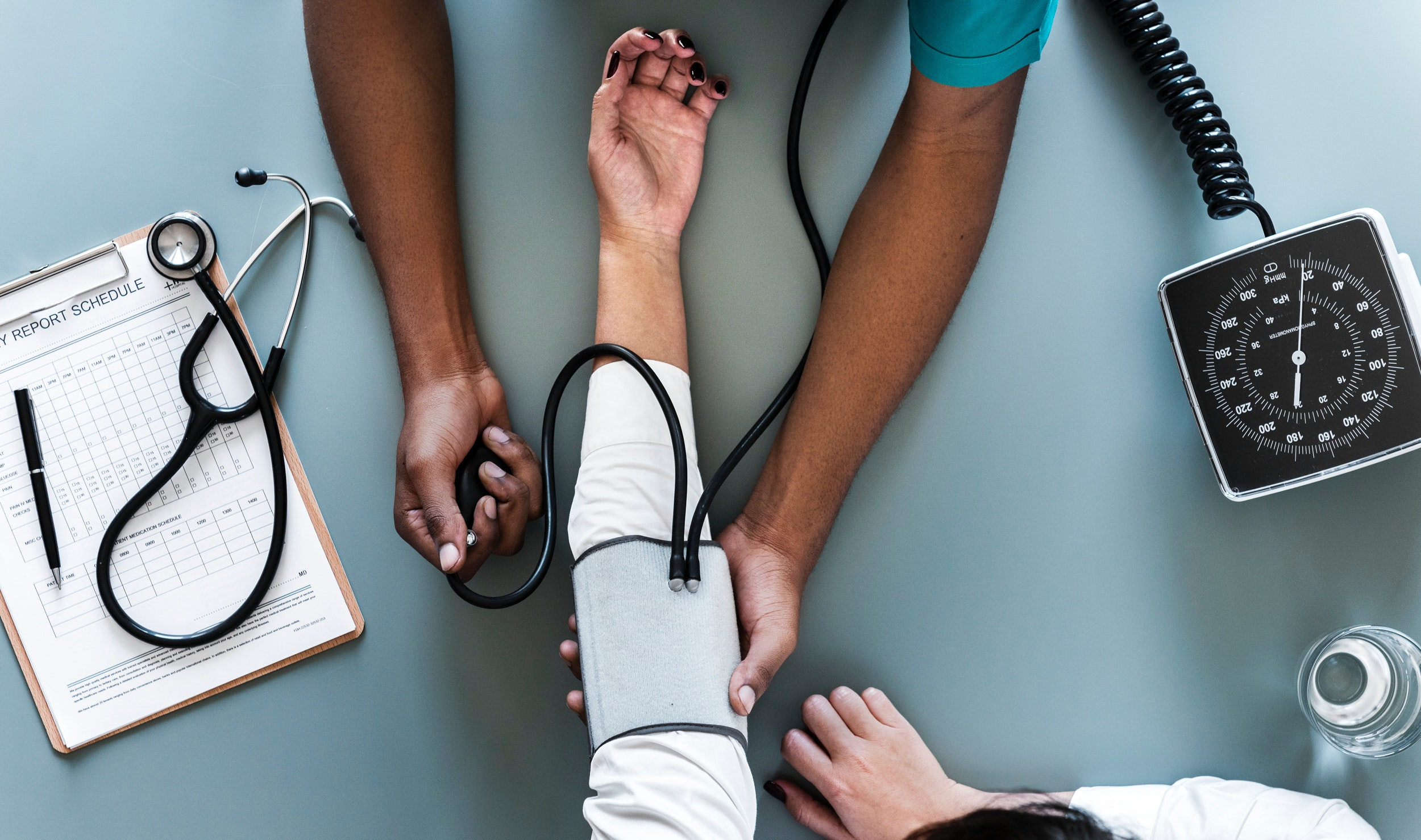Discover normal blood pressure ranges for every age from newborns to seniors. Includes detailed blood pressure charts, why age matters, and when to seek help.”>
What Is Normal Blood Pressure by Age? Complete Charts & Guidelines
Have you ever wondered if your blood pressure is normal for your age? You’re definitely not alone. Many people assume that higher blood pressure is just part of getting older.
But here’s what’s important to know: while blood pressure does tend to rise with age, that doesn’t mean high readings are “normal” or healthy. Current medical guidelines recommend the same target blood pressure for all adults because research shows that lower blood pressure protects your heart, brain, and kidneys at any age.
So what should your blood pressure be? Let’s explore the answer with detailed charts for every age group, from newborns to seniors.
Understanding Blood Pressure Numbers
Before diving into age-specific ranges, you need to understand what your blood pressure numbers actually mean. Blood pressure measures the force of blood pushing against your artery walls as your heart pumps.
Your reading has two numbers, like 120/80. The top number (systolic pressure) shows the force when your heart beats. The bottom number (diastolic pressure) shows the force between beats when your heart rests.
Blood pressure is measured in millimeters of mercury (mmHg), which comes from the original mercury-based instruments doctors used. Today, most blood pressure monitors are digital, but we still use the same measurement units.
Why Both Numbers Matter
Many people focus mainly on the systolic (top) number because it’s usually higher. But the diastolic number is equally important for your health. Research shows that either number can indicate problems when elevated.
For example, a reading of 140/70 indicates high blood pressure even though the bottom number looks fine. Similarly, 115/95 also signals high blood pressure despite a normal top number. Both numbers need to be in the healthy range.
Interestingly, research published in Hypertension found that in younger adults (under 50), the diastolic number may provide additional important information about cardiovascular risk.
Blood Pressure Categories for Adults
The American Heart Association and American College of Cardiology updated blood pressure categories in 2017. These guidelines apply to all adults regardless of age, eliminating the old practice of allowing higher readings for older people.
| Blood Pressure Category | Systolic (Top Number) | Diastolic (Bottom Number) | |
|---|---|---|---|
| Normal | Less than 120 | and | Less than 80 |
| Elevated | 120-129 | and | Less than 80 |
| High Blood Pressure Stage 1 | 130-139 | or | 80-89 |
| High Blood Pressure Stage 2 | 140 or higher | or | 90 or higher |
| Hypertensive Crisis | Higher than 180 | and/or | Higher than 120 |
Notice that some categories use “and” while others use “or.” This matters because you need both numbers in the normal range to have truly normal blood pressure. If either number is elevated, your overall category reflects the higher reading.
What Changed in 2017
The 2017 guideline changes were based on major research findings. The SPRINT study at Harvard showed that targeting systolic blood pressure below 120 mmHg reduced heart attacks, heart failure, and strokes more effectively than the old target of 140 mmHg.
These updated guidelines also eliminated different targets for people over 65. Previous guidelines had allowed higher blood pressure in older adults, but research showed this practice put seniors at unnecessary risk.
Average Blood Pressure by Age and Gender
While the goal is the same for all adults, average blood pressures do vary by age and gender. Understanding these patterns helps you see where your readings fall compared to others in your age group.
Keep in mind that “average” doesn’t mean “ideal.” Many people have blood pressure higher than the recommended 120/80, which is why cardiovascular disease remains so common.
| Age Group | Average Male BP | Average Female BP |
|---|---|---|
| 18-39 years | 119/70 mmHg | 110/68 mmHg |
| 40-59 years | 124/77 mmHg | 122/74 mmHg |
| 60+ years | 133/69 mmHg | 139/68 mmHg |
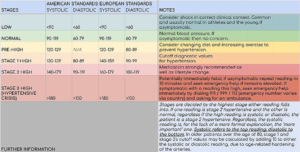
Notice how systolic pressure (top number) increases with age while diastolic pressure (bottom number) often stays stable or even decreases slightly. This pattern is typical because arteries stiffen as we age, which raises systolic pressure.
Gender Differences in Blood Pressure
You probably noticed that men tend to have slightly higher blood pressure than women in younger age groups. However, this difference reverses after menopause when women’s blood pressure often rises more sharply.
Women face unique blood pressure challenges during pregnancy and after menopause. Hormonal changes affect blood vessels, which explains why blood pressure monitoring becomes especially important during these life stages.
Blood Pressure Charts for Children and Teens
Blood pressure for children works differently than for adults. Because children are still growing, normal ranges depend on age, gender, and height. Mayo Clinic recommends checking children’s blood pressure starting at age 3 during routine doctor visits.
For teenagers, blood pressure is defined the same as for adults once they reach adolescence. A reading of 130/80 or higher indicates high blood pressure in teens just like in adults.
Blood Pressure by Pediatric Age
| Age Group | Normal Systolic Range | Normal Diastolic Range |
|---|---|---|
| Newborn (birth) | 60-76 mmHg | 30-45 mmHg |
| 1 month | 73-94 mmHg | 36-56 mmHg |
| 6 months | 82-105 mmHg | 45-68 mmHg |
| 1 year | 85-104 mmHg | 37-66 mmHg |
| 2 years | 86-106 mmHg | 40-61 mmHg |
| 7 years | 96-115 mmHg | 57-76 mmHg |
| 15 years | 110-131 mmHg | 64-83 mmHg |
Children’s blood pressure gradually increases from birth through adolescence as their bodies grow and develop. This steady rise is completely normal and expected.
However, childhood obesity has led to increasing rates of high blood pressure in children. If your child has elevated blood pressure, lifestyle changes like healthier eating and more physical activity can often bring it back to normal ranges.
Why Blood Pressure Increases With Age
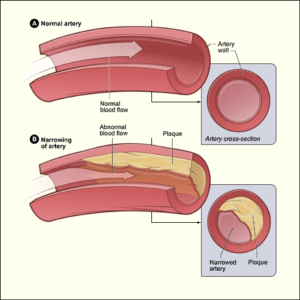
Understanding why blood pressure rises as you age helps explain why prevention becomes so important. Several biological changes occur naturally over time, but lifestyle factors also play major roles.
The good news is that many of these factors can be modified. While you can’t stop the clock, you can slow or prevent age-related blood pressure increases through healthy lifestyle choices.
The Role of Salt Sensitivity
Salt sensitivity also tends to increase with age. This means older adults often experience more significant blood pressure increases from dietary sodium than younger people do.
About 50% of people with high blood pressure are salt-sensitive, but this percentage is much higher in older adults. So reducing sodium becomes increasingly important as you age.
When Blood Pressure by Age Becomes a Concern
Your target blood pressure remains less than 120/80 regardless of your age. But at what point should you take action? The answer depends on your specific readings and other health factors.
Don’t wait until you have symptoms to address high blood pressure. Remember, high blood pressure usually has no symptoms, which is why it’s called the “silent killer.” Regular monitoring catches problems before they damage your organs.
Age-Specific Screening Recommendations
How often should you check your blood pressure? The recommendations vary based on your age and risk factors.
Blood Pressure Screening Schedule:
- Adults 18-39 with normal BP: Check every 3-5 years
- Adults 40+ with normal BP: Check annually
- Anyone with elevated BP: Check every 3-6 months
- People with high BP: Monitor regularly at home plus doctor visits
- Children age 3+: Check at each well-child visit
These are general guidelines. Your doctor might recommend more frequent monitoring based on your personal health history, family history, or other risk factors.
Special Considerations for Older Adults
Managing blood pressure in older adults requires special attention to several unique factors. While the blood pressure goal remains the same, treatment approaches may need adjustment.
Older adults often take multiple medications for various conditions. These drugs can interact with blood pressure medications or affect blood pressure themselves. So careful medication management becomes essential.
Balancing Benefits and Risks in Seniors
Research clearly shows that treating high blood pressure benefits older adults just as much as younger people. Studies demonstrate that lowering blood pressure reduces stroke risk and may also protect against cognitive decline and dementia.
However, treatment should be individualized. Frail older adults or those with multiple health conditions may need slower blood pressure reduction and closer monitoring to avoid side effects.
Blood Pressure During Pregnancy
Blood pressure monitoring takes on special importance during pregnancy. Pregnancy-related high blood pressure conditions like preeclampsia can develop quickly and pose serious risks to both mother and baby.
Normal blood pressure during pregnancy is the same as for non-pregnant women: less than 120/80 mmHg. However, blood pressure naturally decreases slightly during the first two trimesters before gradually returning to pre-pregnancy levels.
Types of Pregnancy-Related High Blood Pressure
Several different blood pressure conditions can affect pregnancy. Each requires different monitoring and treatment approaches.
| Condition | When It Develops | Key Features |
|---|---|---|
| Chronic Hypertension | Before pregnancy or before 20 weeks | High BP that existed before pregnancy |
| Gestational Hypertension | After 20 weeks | High BP without protein in urine |
| Preeclampsia | After 20 weeks | High BP plus organ damage signs |
| Chronic Hypertension with Preeclampsia | After 20 weeks | Pre-existing high BP that worsens |
Pregnant women need more frequent blood pressure checks than usual, especially after 20 weeks of pregnancy. Any sudden increase in blood pressure or symptoms like severe headache, vision changes, or upper abdominal pain requires immediate medical attention.
How to Monitor Your Blood Pressure at Home
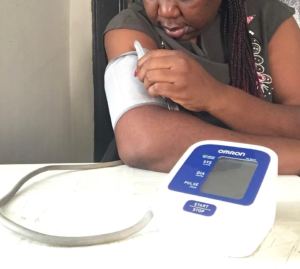
Home blood pressure monitoring provides valuable information between doctor visits. It helps you track patterns, evaluate treatment effectiveness, and catch problems early.
Research shows that people who monitor their blood pressure at home tend to have better control than those who only check it at the doctor’s office.
Timing matters too. Blood pressure naturally varies throughout the day, usually lowest during sleep and highest in the morning. Measure at the same times each day for the most useful comparison.
Avoiding Common Measurement Mistakes
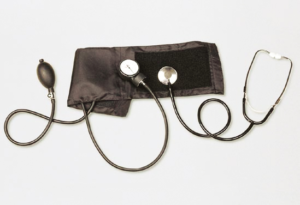
Several common errors can give you inaccurate readings. Make sure you’re not doing any of these things when checking your blood pressure.
Common Mistakes to Avoid:
- Using a cuff that’s too small or too large for your arm
- Placing the cuff over clothing instead of bare skin
- Not resting for at least 5 minutes before measuring
- Talking, moving, or crossing your legs during the reading
- Having a full bladder (empty your bladder first)
- Measuring right after exercise or smoking
- Not supporting your arm at heart level
Also be aware of “white coat hypertension” – when your blood pressure reads higher at the doctor’s office due to nervousness. Home monitoring helps identify this common issue.
Lifestyle Strategies to Maintain Healthy Blood Pressure
Regardless of your age, lifestyle choices significantly impact your blood pressure. These evidence-based strategies work at any age to prevent or lower high blood pressure.
The good news is that lifestyle changes can be as effective as medication for many people with Stage 1 hypertension. Even if you need medication, these habits enhance its effectiveness.
Diet Modifications That Lower Blood Pressure
What you eat directly affects your blood pressure through multiple pathways. The DASH (Dietary Approaches to Stop Hypertension) diet remains the most studied and effective eating pattern for blood pressure control.
DASH emphasizes fruits, vegetables, whole grains, lean proteins, and low-fat dairy while limiting sodium, saturated fat, and added sugars. People following DASH can see blood pressure reductions within just two weeks.
Sodium reduction is particularly important. Most adults should limit sodium to 2,300 mg daily, with even better results at 1,500 mg daily. Since processed foods contain about 70% of dietary sodium, focusing on whole foods naturally reduces salt intake.
Physical Activity Recommendations
Regular exercise ranks among the most effective ways to lower blood pressure naturally. Both aerobic exercise and resistance training provide benefits, though aerobic activity shows the most consistent results.
Aim for at least 150 minutes of moderate-intensity aerobic activity weekly. This could be 30 minutes of brisk walking five days per week. Even if you haven’t exercised in years, starting gradually and building up still provides significant benefits.
For comprehensive guidance on managing blood pressure through lifestyle changes, medications, and supplements, visit our detailed guide on effective high blood pressure management strategies.
The Importance of Regular Monitoring
Consistent blood pressure monitoring is crucial because readings can change over time due to aging, weight changes, stress levels, and other factors. What was normal last year might be elevated now.
Many people don’t realize they have high blood pressure because it develops gradually without symptoms. By the time you notice problems, your blood pressure may have been elevated for months or years, potentially causing organ damage.
What Your Numbers Reveal Over Time
Single blood pressure readings provide limited information. Tracking your numbers over time reveals important patterns about your cardiovascular health and treatment effectiveness.
Look for trends rather than focusing on individual readings. Is your blood pressure gradually creeping upward? Do certain activities or times of day show higher readings? Does your medication effectively control your pressure throughout the day?
These patterns help your healthcare provider make informed decisions about treatment adjustments. Plus, seeing improvements in your numbers provides motivation to maintain healthy habits.
When to Contact Your Healthcare Provider
Certain blood pressure readings or symptoms require prompt medical attention. Don’t wait for your next scheduled appointment if you experience any concerning signs.
Also contact your provider if you experience side effects from blood pressure medications, such as persistent dizziness, extreme fatigue, or a dry cough. Alternative medications are available that might work better for you.
Understanding Your Personal Blood Pressure Goals
While the general goal is less than 120/80 mmHg, your personal target might differ based on specific health conditions. Your doctor considers multiple factors when setting individualized goals.
People with diabetes, chronic kidney disease, or a history of heart attack or stroke may benefit from even tighter blood pressure control. Conversely, very elderly or frail individuals might have slightly relaxed targets to minimize medication side effects.
Don’t assume that because your blood pressure is “close to normal” or “not too high” that you’re in the clear. Small differences in blood pressure readings translate to significant differences in cardiovascular risk over time.
The Brain-Heart Connection
Recent research reveals exciting connections between blood pressure control and brain health. Maintaining healthy blood pressure throughout life doesn’t just protect your heart – it also protects your brain.
Studies show that people who control their blood pressure reduce their risk of cognitive decline, dementia, and Alzheimer’s disease by 12-19%. This makes blood pressure management even more important as you age.
The connection makes sense when you consider that your brain requires steady blood flow to function properly. High blood pressure damages small blood vessels in the brain over time, contributing to cognitive decline.
Moving Forward With Confidence
Understanding normal blood pressure by age empowers you to take control of your cardiovascular health. While blood pressure naturally tends to increase as you get older, this trend isn’t inevitable with proper lifestyle choices and medical care when needed.
Remember that the goal of less than 120/80 mmHg applies to all adults regardless of age. This target is based on extensive research showing that lower blood pressure protects against heart attack, stroke, kidney disease, and cognitive decline.
Regular monitoring, healthy lifestyle choices, and appropriate medical treatment when needed form the foundation of good blood pressure management. Start where you are, make gradual improvements, and track your progress over time.
Blood pressure management isn’t just about adding years to your life – it’s about adding life to your years. Healthy blood pressure means more energy, better physical function, sharper thinking, and reduced risk of devastating cardiovascular events.
References
- American Heart Association. Understanding Blood Pressure Readings. Retrieved September 28, 2025.
- Harvard Health Publishing. (2024). Reading the new blood pressure guidelines. Retrieved September 28, 2025.
- Baptist Health. Healthy Blood Pressure by Age and Gender (Chart). Retrieved September 28, 2025.
- Mayo Clinic. (2024). Blood pressure chart: What your reading means. Retrieved September 28, 2025.
- MedicineNet. (2024). What is normal blood pressure by age? Retrieved September 28, 2025.
- American Heart Association. Top 10 Things to Know About the New AHA/ACC High Blood Pressure Guideline. Retrieved September 28, 2025.
- Heart Research Institute. (2023). What is normal blood pressure by age? Retrieved September 28, 2025.
- American Heart Association. (2021). Which blood pressure number matters most? The answer might depend on your age. Retrieved September 28, 2025.
- Mayo Clinic. (2021). High blood pressure in children – Symptoms & causes. Retrieved September 28, 2025.
- American Medical Association. (2025). New BP guideline: 5 things physicians should know. Retrieved September 28, 2025.
Medical Disclaimer
This article is for informational purposes only and does not constitute medical advice. Blood pressure monitoring and management require professional medical supervision. Always consult with a qualified healthcare provider for blood pressure evaluation, diagnosis, and treatment recommendations. Individual blood pressure targets may vary based on age, health conditions, and other factors. This information should not replace professional medical guidance or regular blood pressure monitoring by healthcare professionals.
